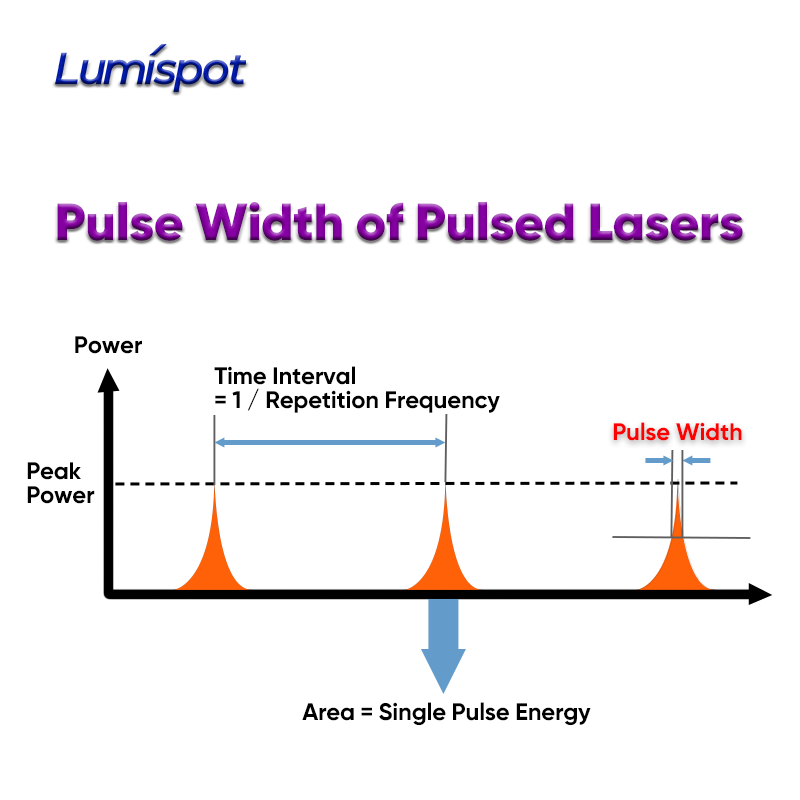Pulse width refers to the duration of the pulse, and the range typically spans from nanoseconds (ns, 10-9 seconds) to femtoseconds (fs, 10-15 seconds). Pulsed lasers with different pulse widths are suitable for various applications:
- Short Pulse Width (Picosecond/Femtosecond):
Ideal for precision machining of fragile materials (e.g., glass, sapphire) to reduce cracks.
- Long Pulse Width (Nanosecond): Suitable for metal cutting, welding, and other applications where thermal effects are required.
- Femtosecond Laser: Used in eye surgeries (such as LASIK) because it can make precise cuts with minimal damage to surrounding tissue.
- Ultrashort Pulses: Used to study ultrafast dynamic processes, such as molecular vibrations and chemical reactions.
The pulse width affects the performance of the laser, such as the peak power (Ppeak = pulse energy/pulse width. The shorter the pulse width, the higher the peak power for the same single-pulse energy.) It also influences thermal effects: long pulse widths, like nanoseconds, can cause thermal accumulation in materials, leading to melting or thermal damage; short pulse widths, like picoseconds or femtoseconds, enable “cold processing” with reduced heat-affected zones.
Fiber lasers typically control and adjust pulse width using the following techniques:
1. Q-Switching: Generates nanosecond pulses by periodically changing the resonator losses to produce high-energy pulses.
2. Mode-Locking: Generates picosecond or femtosecond ultrashort pulses by synchronizing the longitudinal modes inside the resonator.
3. Modulators or Nonlinear Effects: For example, using Nonlinear Polarization Rotation (NPR) in fibers or saturable absorbers to compress the pulse width.
Post time: May-08-2025

